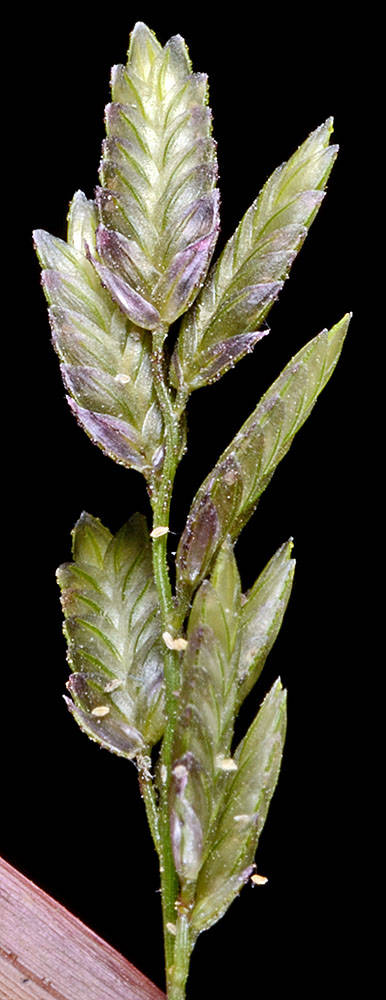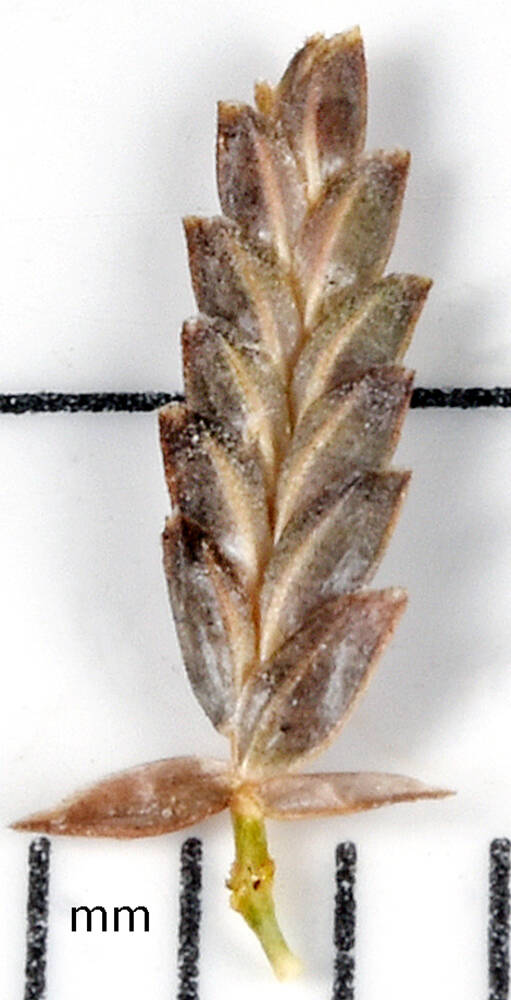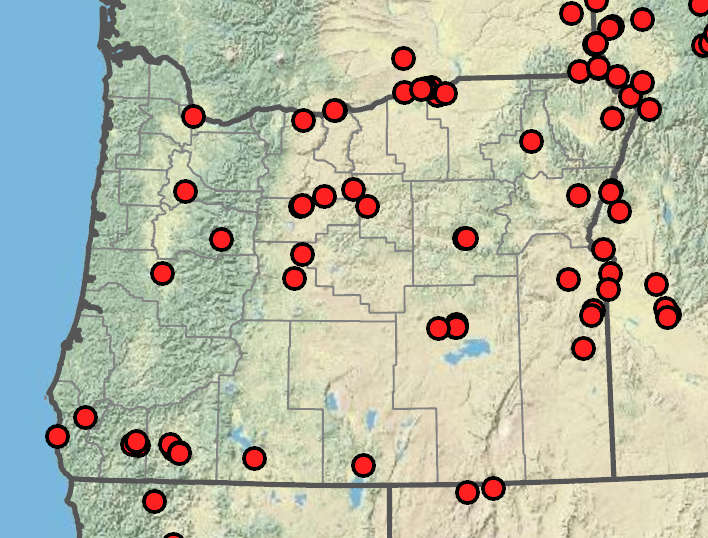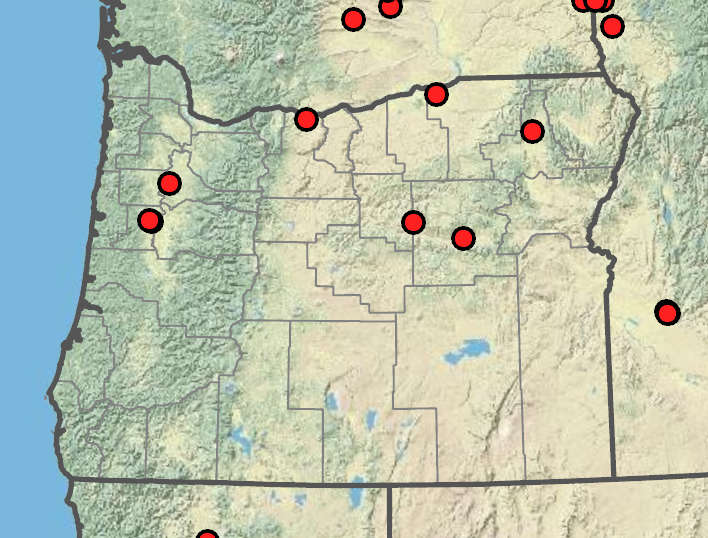Eragrostis cilianensis
Eragrostis minor
stinkgrass
little lovegrass
erect or decumbent, sometimes with saucer-like glands below the nodes.
erect to decumbent, sometimes with a ring of glandular tissue below the nodes.
sheaths glabrous or occasionally glandular; tops with hairs to 5 mm;
blades (1)5–20 cm × (1)3–5(10)mm;
lower surfaces glabrous or sometimes glandular;
margins with conspicuous glands.
sheaths sometimes glandular on the midveins; tops with hairs to 4 mm;
blades 1.5– 10 cm × 1–3(4)mm;
margins sometimes with saucer-like glands.
(3)5– 16(20) × 2–8.5 cm, oblong to ovate, condensed to open;
primary branches 0.4–5 cm, appressed or diverging 20–80° from the inflorescence axis;
pedicels 0.2–3 mm; stout; straight; stiff, usually divergent, occasionally appressed;
disarticulation below the florets; each floret falling as a unit;
rachillas persistent.
4–20 × 2.2–8(10)cm; ovate; open to contracted;
rachises sometimes with glandular spots or pits below the nodes or rarely with a glandular ring;
glands usually dull; greenish gray to straw-colored;
primary branches 0.5–6 cm, diverging 20–100° from the inflorescence axis;
pedicels 1–4 mm; stiff; straight, divergent, usually with a distal ring of saucer-like glands;
disarticulation acropetal;
paleas persistent.
6–20 × 2–4 mm, gray or greenish, 10–40 florets.
4–7(11) × 1.1–2.2 mm, mostly reddish purple to greenish to occasionally grayish, 7–12(20) florets.
broadly ovate to lanceolate, membranous, usually glandular;
lower glumes 1.2–2 mm, usually 1-veined;
upper glumes 1.2–2.6 mm, usually 3-veined.
broadly ovate, membranous;
lower glumes 0.9–1.4 mm;
upper glumes 1.2–1.6 mm.
0.5–0.7 mm, globose to broadly ellipsoid, not grooved.
0.4–0.7 mm, ellipsoid, not grooved.
2–2.8 mm, broadly ovate, membranous;
keels with 1–3 saucer-like glands, obtuse to acute.
1.4–1.8 mm, broadly ovate, membranous;
keels occasionally with 1–2 saucer-like glands;
tips acute to obtuse.
1.2–2.1 mm; hyaline;
keels scabrous or sometimes also ciliate.
1.3– 1.7 mm; hyaline;
keels smooth or minutely scabrous.
3, 0.2–0.5 mm, yellow.
2, 0.2–0.3 mm; reddish brown.
=20.
=40.
Eragrostis cilianensis
Eragrostis minor
Disturbed sites, roadsides. 0–1700m. BR, Col, ECas, Est, Lava, Owy, Sisk, WV. CA, ID, NV, WA; throughout most of North America; Europe. Exotic.
Eragrostis cilianensis has large, dense inflorescences that seem too large for the small plants. As the common name suggests, it has an unpleasant odor. It also differs from the other weedy annual Eragrostis in having globose caryopses, yellow anthers, often ciliate paleas and wider spikelets.
Disturbed places, pavement cracks. 50–900 m. BW, Col, Lava, WV. CA, ID, NV, WA; throughout most of Canada and US; Europe. Exotic.
Eragrostis minor closely resembles E. pectinacea, which is glandless. Similar Eragrostis cilianensis has denser inflorescences and wider spikelets.
Barbara Wilson, Richard Brainerd, Nick Otting
Barbara Wilson, Richard Brainerd, Nick Otting
- Local floras:
BC,
CA,
OR,
WA
- Local Web sites:
CalFlora,
CalPhotos,
Flora NW,
PNW Herbaria
WildflowerSearch
iNaturalist (observations)
USDA Plants Database
- LBJ Wildflower Center
- SEINet
- Plants of the World Online
- Encyclopedia of Life
- Wikipedia
- Google Image Search
- Local floras:
BC,
CA,
OR,
WA
- Local Web sites:
CalFlora,
CalPhotos,
Flora NW,
PNW Herbaria
WildflowerSearch
iNaturalist (observations)
USDA Plants Database
- LBJ Wildflower Center
- SEINet
- Plants of the World Online
- Encyclopedia of Life
- Wikipedia
- Google Image Search





